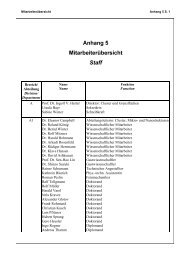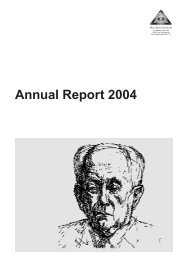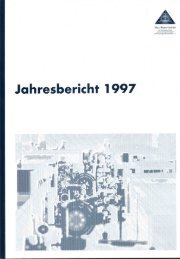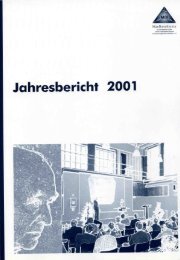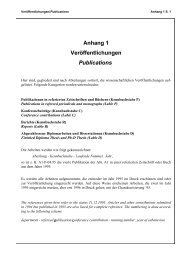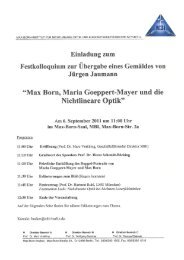You also want an ePaper? Increase the reach of your titles
YUMPU automatically turns print PDFs into web optimized ePapers that Google loves.
Attosecond Imaging:<br />
Asking a Molecule to Paint<br />
a Self-Portrait<br />
The importance of a researcher’s contribution to science can be measured by two factors –<br />
whether it extends the scientific foundations laid by previous generations and how it enables<br />
future developments. Looking back over the 50 years since <strong>Max</strong> <strong>Born</strong> was awarded the Noble<br />
Prize, we can see that he and the other fathers of quantum mechanics made one of the<br />
greatest contributions to science in its history: They extended the classical mechanics of<br />
Newton into the world of electrons, nuclei, atoms and molecules. In so doing, they transformed<br />
physics, chemistry and biology. Some of their ideas, such as the “quantum leap”, have<br />
even entered the common language.<br />
I never met <strong>Max</strong> <strong>Born</strong>. In fact, Canadian science hardly existed at the time of his most important<br />
contributions, and yet my connection to his legacy is not so far removed. I work in the<br />
National Research Council of Canada, which came into international prominence after World<br />
War II with the arrival of Gerhard Herzberg. Herzberg had been a postdoctoral fellow in Göttingen<br />
in 1928. During his stay there he was greatly influenced by both the science that James<br />
Frank and <strong>Max</strong> <strong>Born</strong> were studying and the atmosphere in which it was pursued. Herzberg was<br />
particularly impressed by the interplay between theory and experiment that Franck and <strong>Born</strong><br />
encouraged. He staffed the group that he formed at NRC with both theoretical and experimental<br />
scientists. This mixture also characterizes my own group’s approach to femtosecond science<br />
today.<br />
Herzberg and his team extended the new quantum mechanics to molecules. By comparing its<br />
predictions with the measurements that he and his group were performing, they revealed the<br />
architecture of many molecules. Today, scientists around the world are still building on the<br />
insights gained by Herzberg’s work on molecular structure and <strong>Max</strong> <strong>Born</strong>’s contributions to<br />
quantum mechanics.<br />
I am very pleased that my office at NRC is next to the former office of Dr. Herzberg. It is now<br />
kept as a living “museum” used by guests at NRC. In Herzberg’s time these office walls displayed<br />
portraits of some of the great scientists who had influenced him. They are still there.<br />
There are 12 of them. Figure 1 shows a grouping of four portraits that includes James Franck<br />
<strong>Max</strong> <strong>Born</strong> • Paul Corkum<br />
Paul Corkum<br />
National Research Council<br />
of Canada<br />
Ottawa, K1A 0R6, Canada<br />
33



